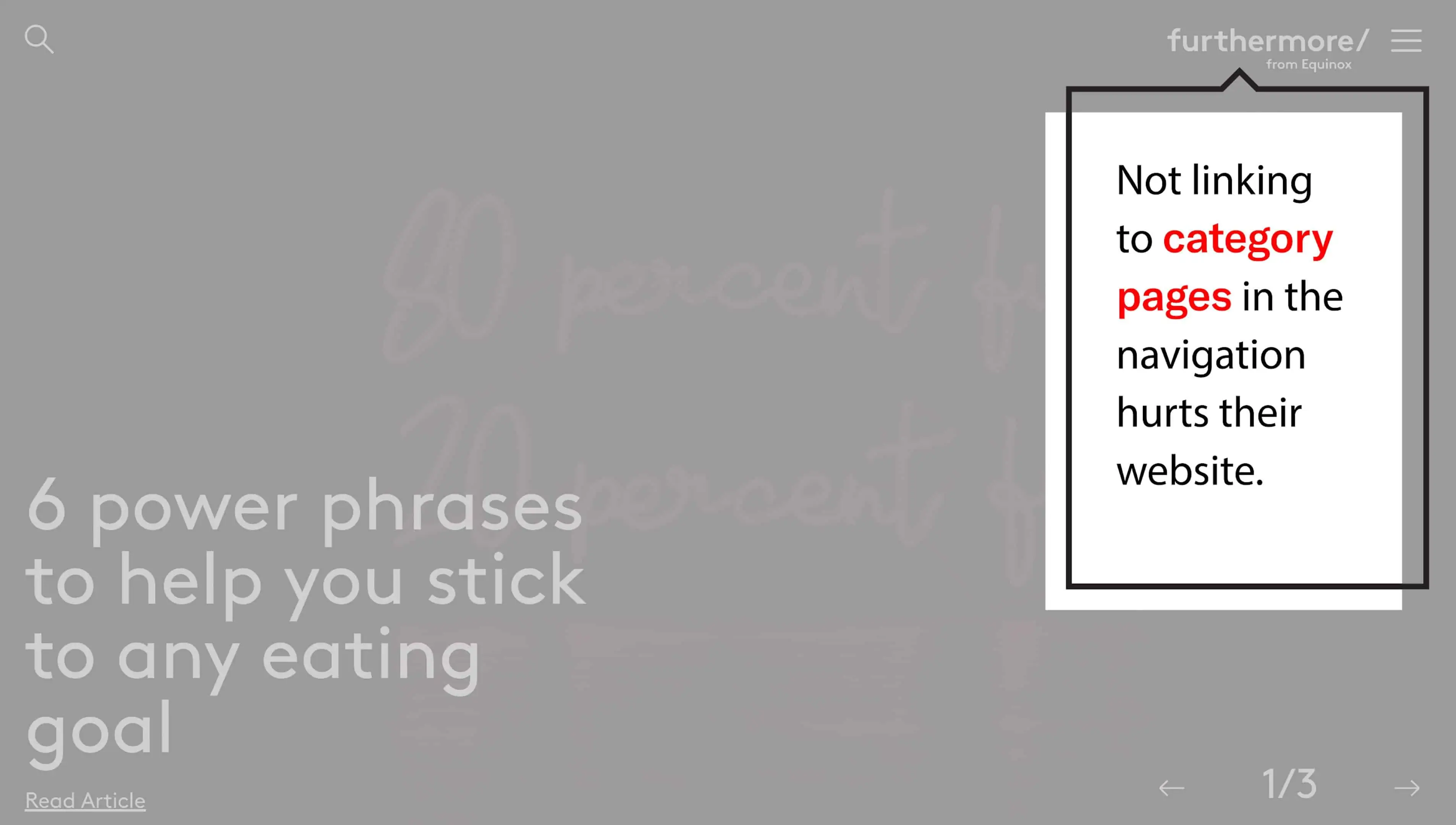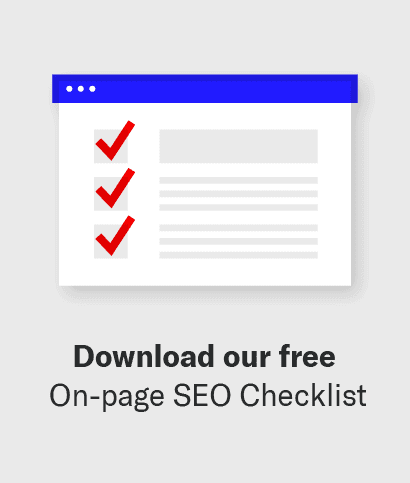Link building plays an essential role in SEO, and there are many techniques to help you earn backlinks for your site. But, there are a few mistakes you might unknowingly be making that negatively impact your link building and rankings.
Video Transcript
Hey, I’m Ross, founder of Siege Media, and today we’re going to talk about four mistakes that I commonly see that are strategically wrong about how people think about links.
Mistake #1: They either believe in a philsophy of 100% manual link building, or they don’t build links at all.
The number one mistake is thinking that they either 1.) need to build links 100% of the time or 2.) don’t need to build links at all. There’s two paths where they want to have link building carry their site, and then the other one is not do it at all. As with all things, most answers are somewhere in that middle area. And why I say this, is people will have sites that are poorly designed.
Their content will be mediocre. It’s not going to passively acquire links over time. This is the brute force link building company that says, “We just need links,” and maybe they’ve had some legacy rankings and think that’s the solver of the problem. But when you actually go into their backlink velocity, it’s flat.
The reason it’s flat is because it’s poor content and product overall. In some verticals, product is simply not going to generate a ton of links. But there is a healthy medium in most markets where a healthy product will acquire links naturally.
What product can be, can be content, can just be the business, but these things generally will get some references online if they trust you and if the quality is good. If the design is good and the information’s trustworthy, what you do is basically upper echelon. This should generate a positive backlink velocity when you look at tools like Ahrefs.
When you see these velocities, these are the companies that have the possibility to augment what they do with actual manual link building and crush it. These are the companies that blow it out of the water and dominate markets because they passively acquire links and they also manually acquire links.
A secondary piece of this is because they have a nice enough site and product, the link building that’s done off content or done off their site in particular is more successful. The cost per link to promote a great website significantly lower than a crappy one.
Low quality sites are more likely to have negative or inconsistent backlink velocities.
If you’re that low quality website and say, “We need links,” and you’re not going to solve the inherent mediocrity that is your business and your website. You might hypothetically have a cost per link of $1,000 for a site setup. And that other business might have $750 to $500 for the exact same content in that same framework and same business because of that.
You can see how that compounds over time to be a more economically rewarding equation for your business. That model rewards a business that is set up correctly. If you have a bad-looking website, you might have inconsistent link velocity.
They’ve also probably come in and out in terms of how they generated that and possibly why they’re doing poorly. Companies like this occasionally come to us and say, “We need links.” But what they need to do is fix their site and content framework, and then apply manual outreach through quality content in order to augment those results at scale.
The reverse is this kind of company that’s passively doing this, and they’re probably okay. They’re going to acquire traffic over time, but what they’re missing is deliberate effort. Link building is hard, it’s not always a natural activity. If they’re up against that same quality of company that is doing that at scale, they’re going to get crushed, because they’re just thinking product wins the day.
There is not one answer. It’s in the middle and it’s those people in the middle that believe in both that are dominating most markets. So, be that person because that is a common strategic link building mistake I see.
Mistake #2: They think that they have to generate high DA links.
Another mistake I see is thinking you only need high DA links. Often times you see these sites and they say, “We need links from CNN or Time.com,” but when you look at their velocity, it’s flat.
The reality is they’re not generating enough links, but they’re not looking in the right place or generating enough at scale organically. It could actually be the same problem I just discussed, because they think links aren’t working for them. They maybe sort of paddling along, they might not be generating enough of those, and they might be losing them because their site quality is not good enough.
Both of those can relate, but because they’re coming to you with that high DA request, there might be a misalignment. Their market might not actually make sense for this. I’ve talked about this in a previous video, but in TLDR, certain lifestyle markets aren’t as high DA on average. Mommy bloggers, or lifestyle like Hallmark, their DA spread is actually much lower than a business-type market because of the nature of that vertical.
That’s not bad, it’s just where their market is. You should embrace where your market is because for them, links from CNN and Time.com aren’t going to be natural. Data studies for Hallmark doesn’t make sense. That’s not on brand for them, so they should embrace who they are and actually acquire the links at scale rather than trying to go out this other pattern that just doesn’t make sense for them.
Mistake #3: They are against blog links.
Another mistake is that blog links simply don’t make sense for them. If someone comes to us and says, “we don’t want blog links. I want my product page, my category, my money page links,” almost always, you see they’ve tried link building off their blog and internal linking is just broken. They’re not linking in the nav, it’s not in the footer, it’s not intelligently thought through. A lot of the external link equity is being passed to other blog posts or just pages that have no value.
So first, solve for that and you’ll more intelligently be pushing equity to those pages and seeing the rewards of content marketing in general, that can still power those bottom funnel page rankings. In addition to that, you can actually generate links with blog content.
There is a framework to do that if it ties in semantically. A percentage of the time, we say around 40%, we can actually generate links to category and money page links because it ties in semantically. If people like that content enough, you’ll be surprised how often they actually link to it and will be willing to link to a specific page.
You can also offer to write custom content to lower their friction to link to you, which is another scenario where you can tie in that semantically-connected content to get those links. That is one way seen I’ve seen mistakes as well is when people just pass off out of hand that blog content cannot do enough for them from a link generation standpoint.
Mistake #4: They don’t generate enough category or “money page” links.
The last common mistake I see is simply that they need more of those category links or that their set up has to funnel on that, which ties into the blog content similarly. But, there is an approach that also makes sense.
We actually had a client come to us, and they got a lot of mentions of their homepage, and another application you can actually apply is even though they had a lot of city page links, they were getting mentioned for their homepage when in a reference to those other pages.
So, if you went to travel to San Diego, you would most likely link to the VRBO homepage instead of those city pages, just because it’s not natural to search “San Diego rentals” when you’re doing that and link to it. So, they’re getting a lot of pages that go to their homepage that actually reference subpages.
Finding places with your business of choice but you go to those people that are actually mentioning San Diego or Oakland or New York City or what have you, or product type, you can actually ask them, “Hey, we would be really appreciate it if you could move this to this link instead, it would add context to your readers. It’d be more useful and of course, be much appreciated as well.”
You’ll be amazed how often that works. Probably 50% or higher, and it basically will redistribute that equity with more important pages on your site.
So, these are pretty big link-building mistakes people make strategically. It can make a major difference in how you think about links, how you value them and of course, the value you get from them.
If you’re guilty of making these link-building mistakes or you’re not seeing success from your outreach efforts, our content marketing course shares our entire outreach process that earns hundreds of links per month for our clients.









